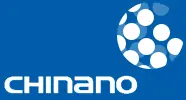Since Nanoimprint technology was invented in 1995, it has experienced more than 20 years history of technological development. Because of its excellent technical characteristics: high resolution, low cost, and high productivity, it was considered a star technology at the beginning of its birth. It is rated as "one of 10 emerging technologies that will change the world (MIT Technology Review). It has received extensive attention from academia and industry and has even been included in the international semiconductor industry technology development blueprint.
Especially in recent years, the demand in China for capabilities such as large-volume, high-precision micro- and nano processing in the industry, has begun to explode. The demand is present in many application areas including micro- and nano optical components, AR lenses, DOE, TOF and MLA. Also within biomedical applications such as biochips, microfluidic channels, microneedles, are potential areas of use for nanoimprint technology. A large number of high-tech companies have appeared in these fields, some large listed companies have also begun to deploy nanoimprint technology and they are investing huge amounts of funds and resources. They are actively pushing the industrialization of nanoimprint technology to a new level in China.
In 2023, Chinese experts in the field of nanoimprint technology held the first NTAC Global Nanoimprint Technology and Application Conference in Suzhou, providing a long-term and stable communication platform for the research and industry community committed to nanoimprint technology development. The first NTAC conference invited a large number of experts and scholars in the field of nanoimprint to discuss cutting-edge technologies and exchange the latest achievements, which sparked a warm response.
The 2nd Global Nanoimprint Technology and Application Conference will uphold the original intention, to gather global nanoimprint technology industrial resources, to promote the aggregation of talents, technological innovation and achievement transformation from nanoimprint technology to industry, to accelerate the breakthrough of the development bottleneck in the field of nanoimprint technology manufacturing and to promote the progress of Nanoimprint Technology and Industrial Applications.











